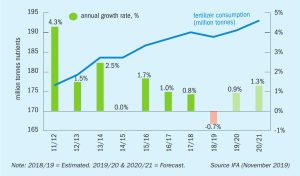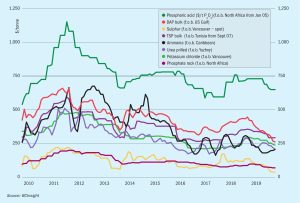
ANNA 2019
Highlights of papers presented at the recent Ammonium Nitrate/Nitric Acid (ANNA) Conference, held in September in Vienna.

Highlights of papers presented at the recent Ammonium Nitrate/Nitric Acid (ANNA) Conference, held in September in Vienna.

CRU events will convene the 2020 Phosphates International Conference & Exhibition in Paris at the Marriott Rive Gauche between 8-10 March.

Andy Hemphill , senior editor for potash at ICIS Fertilizers, takes a deep dive into the potash market. Potash producers are praying that tight capacity control and resurgent demand will curb the current bearish price trend.

We look ahead at fertilizer industry prospects for the next 12 months, including supply and demand growth, and explore the key agricultural, macroeconomic and geopolitical drivers likely to shape the market during 2020.

Market Insight courtesy of Argus Media
Gordon (Gord) McKenzie became the new president and CEO of Canpotex in mid-January. His appointment is the culmination of a 25-year fertilizer industry career in a variety of senior sales and marketing roles. Gord most recently served as Mosaic’s vice president for global sales.